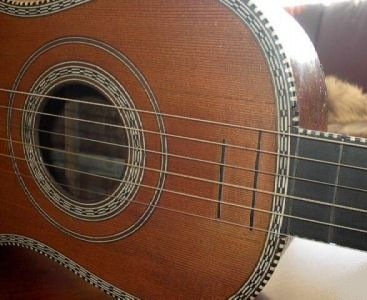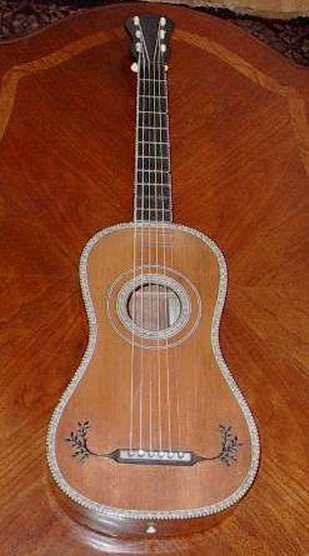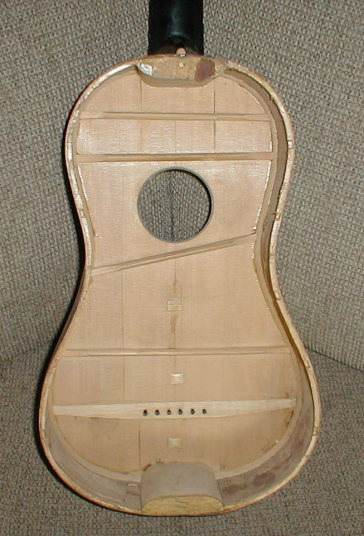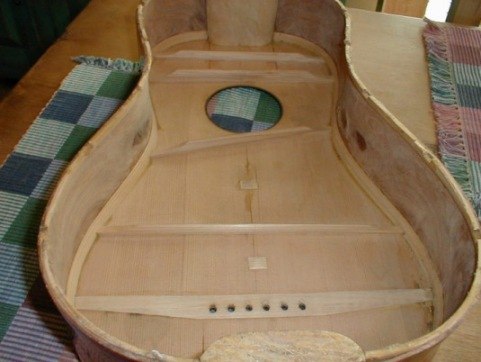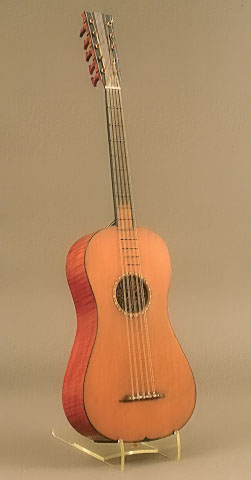Hi everyone,
Here's my recently finished #2. It's a VERY loose copy of an early 1800's Martinez classical. I made copious stupid mistakes & it took way too long - 8 months. You fine people on this forum have been a great inspiration & help in the long & difficult birth of this project. Thank you for all of your generous sharing of experience & knowledge.
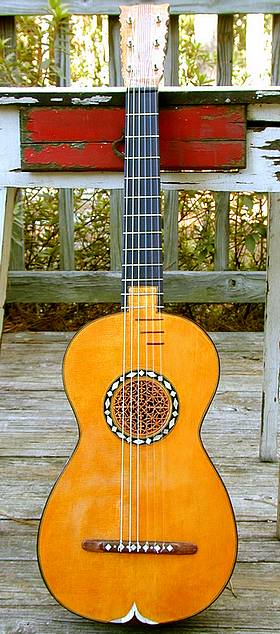
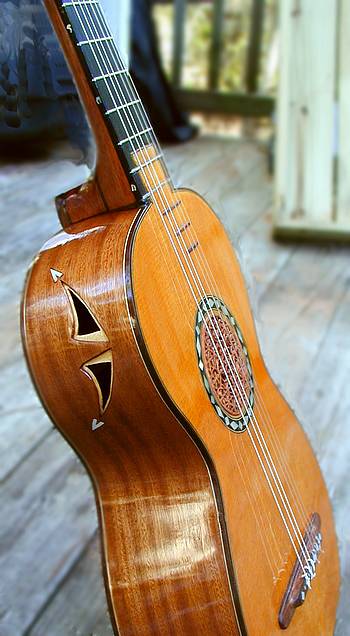
Anyway, here's the long & short:
Engleman spruce top (spray-dyed)
Sapele back & sides
mahogany neck
bois d'rose fingerboard
maple peg overlay & rose
Madagasgar rosewood bindings
Madagasgar frets (just the three on the top)
Indian rosewood bridge
24.75" scale
This little guitar would irritate a traditionalist. The neck bolts on and the construction methods are modern. I know the plastic & metal uke pegs are not typical of a 19th century classical but I can always buy a peg shaper & reamer later. These were MUCH cheaper and they work great. This is not a client guitar - it's for my own use.
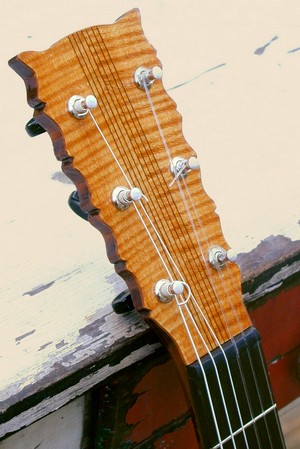
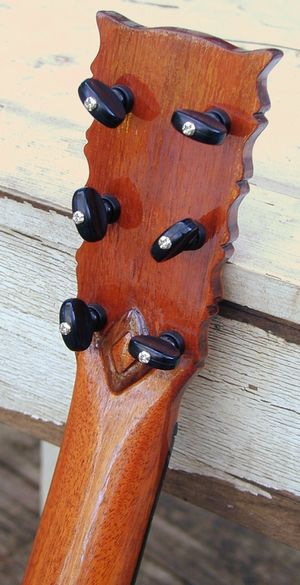
The rose is a press-fit piece of maple sawn & carved & sanded into shape. The sound port on the upper bout sounds very nice & present. The bridge is typical of a lute-style bridge - it has no saddle so the tension is all longitudinal (parallel to the neck). As a result, this guitar has an overall soft voice that's more attack than sustain ... typical of (you guessed it) a lute. I like the sound but I wouldn't suggest it for concertizing. Nice bass for such a small body & kind of soft "plunky" trebles.
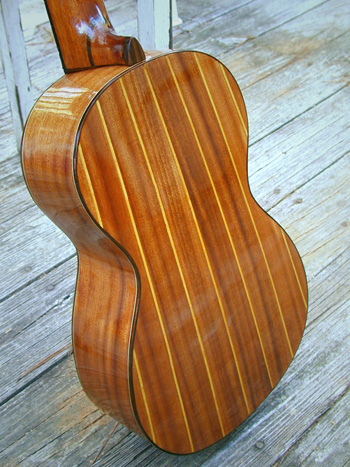
The back is a regular two-piece but has shallow grooves that are filled with gold acrylic paint, then finished over. I like this look, sort of a faux multi-piece back.
The back is ladder braced. The VERY thin top has three fan braces in the lower bout & ladder braces above & below the soundhole. No bridge patch as this uses low tension strings. The plan was found in GAL's Big Red Book #3.
The finish is Minwax wipe-on polyurethane (very non-traditional) that is yet to be polished & buffed out. I'll wait a few weeks.
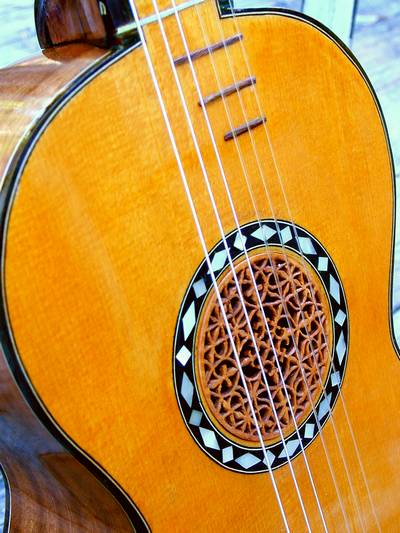
All in all I like the sound & the vibe of this little fella. Now, on to building # 3 !!
Thanks for looking, I welcome comments and/or questions of any kind.
Skip
 . This is YOUR guitar and YOUR design elements, thats what sets builders apart from each other. I also like your side ports and the back really does look like multi-piece. It kind of threw me for a loop when I saw the soundboard inlayed into the fretboard but with low tension it will probably never need a reset anyway (maybe this is the answer to setting the neck angle
. This is YOUR guitar and YOUR design elements, thats what sets builders apart from each other. I also like your side ports and the back really does look like multi-piece. It kind of threw me for a loop when I saw the soundboard inlayed into the fretboard but with low tension it will probably never need a reset anyway (maybe this is the answer to setting the neck angle . Keep it up Skip, I'm looking forward to seeing the next one.
. Keep it up Skip, I'm looking forward to seeing the next one. 
